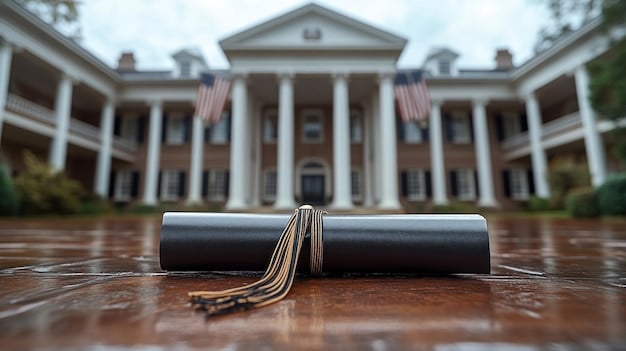Affirmative Action’s End: College Admissions in 2025

The Supreme Court’s ruling against affirmative action is poised to reshape college admissions in 2025, compelling institutions to seek alternative strategies for promoting diversity while adhering to the new legal landscape that prohibits race as a determining factor.
The Supreme Court’s decision to end affirmative action has sent shockwaves through the higher education system. The question now is: how will the new Supreme Court ruling on affirmative action impact college admissions in 2025?
Understanding the Supreme Court’s Affirmative Action Ruling
In June 2023, the Supreme Court effectively struck down affirmative action policies in college admissions, deeming them unconstitutional. This landmark decision overturned decades of precedent that allowed colleges and universities to consider race as one factor among many in their admissions processes. The ruling is based on the premise that such policies violate the Equal Protection Clause of the Fourteenth Amendment.
Key Aspects of the Ruling
The Supreme Court’s decision specifically addressed cases involving Harvard University and the University of North Carolina, two institutions with long-standing affirmative action programs. The Court found that these programs, while intending to promote diversity, ultimately discriminated against certain applicants based on their race.
- Equal Protection Clause: The Court emphasized that the Equal Protection Clause prohibits government entities, including public universities, from discriminating based on race.
- Merit-Based Admissions: The ruling suggests a shift towards more merit-based admissions, where academic achievements, extracurricular activities, and personal essays are given greater weight.
- No Explicit Consideration of Race: Colleges are now barred from explicitly considering an applicant’s race as a determining factor in admissions decisions.

The implications of this ruling are far-reaching, potentially affecting the demographic makeup of college campuses across the United States. Colleges must now find alternative ways to achieve diversity without running afoul of the law.
The Immediate Aftermath: Changes for the Class of 2025
The immediate impact of the Supreme Court’s ruling is being felt by the incoming class of 2025. Colleges and universities are scrambling to revise their admissions policies and procedures to comply with the new legal requirements. This has led to a period of uncertainty and adaptation for both institutions and prospective students.
Many institutions are reviewing their application processes to ensure that race is not a determining factor. This includes:
- Revising Application Essays: Colleges may need to adjust the prompts for application essays to avoid soliciting information that could lead to the consideration of race.
- Training Admissions Staff: Admissions officers are undergoing training to ensure they understand and adhere to the new legal standards.
- Seeking Legal Guidance: Universities are consulting with legal experts to ensure their policies are compliant with the Supreme Court’s ruling.
Early Adjustments and Strategies
Some colleges are already implementing new strategies to maintain diversity without explicitly considering race. These include focusing on socioeconomic factors, expanding recruitment efforts in underserved communities, and emphasizing the importance of personal essays that highlight an applicant’s unique experiences and perspectives.
The transition period is expected to be challenging, with potential legal challenges and adjustments along the way.

Strategies Colleges May Employ to Promote Diversity
With the ban on affirmative action, colleges are exploring various alternative strategies to promote diversity within their student bodies. These strategies aim to create a diverse environment without explicitly considering race as a determining factor.
Targeting Socioeconomic Factors
One approach is to focus on socioeconomic factors, such as family income, educational background, and geographic location. By prioritizing applicants from disadvantaged backgrounds, colleges can indirectly increase racial and ethnic diversity.
Enhancing Recruitment Efforts
Another strategy involves expanding recruitment efforts in underserved communities. This includes visiting high schools in low-income areas, offering scholarships and financial aid to students from diverse backgrounds, and partnering with community organizations to reach a wider pool of applicants.
Here are some additional strategies institutions may consider:
- Holistic Review: Emphasizing a holistic review process that considers an applicant’s entire profile, including their personal essays, extracurricular activities, and letters of recommendation.
- Eliminating Legacy Preferences: Scrapping policies that give preference to applicants with family connections to the institution, which tend to benefit wealthier, predominantly white families.
- Automatic Admission Policies: Implementing policies that automatically admit students who graduate at the top of their class from high schools with a high percentage of low-income students.
These strategies are designed to create a more diverse student body while complying with the Supreme Court’s ruling.
The Role of Standardized Tests in the Post-Affirmative Action Era
The role of standardized tests, such as the SAT and ACT, in college admissions is also under scrutiny in the wake of the Supreme Court’s decision. Some argue that these tests are inherently biased and perpetuate inequalities, while others maintain that they provide a standardized measure of academic ability.
The Debate Over Standardized Tests
Critics of standardized tests argue that they disproportionately disadvantage students from low-income backgrounds and underrepresented minority groups. These students often lack access to expensive test preparation resources and may face systemic barriers that impact their test scores.
Test-Optional Policies
In recent years, many colleges and universities have adopted test-optional policies, allowing applicants to choose whether or not to submit their SAT or ACT scores. This trend is likely to continue in the post-affirmative action era, as colleges seek to reduce reliance on standardized tests and focus on other factors that contribute to a holistic review of applicants.
Here are some arguments for and against the use of standardized tests:
- For: Provide a standardized measure of academic ability, help colleges compare applicants from different high schools, and can identify talented students from disadvantaged backgrounds.
- Against: Biased against low-income and minority students, do not accurately predict college success, and can perpetuate inequalities.
- Alternative Assessment Methods: Colleges are increasingly considering alternative assessment methods, such as portfolios, interviews, and performance-based tasks.
The debate over standardized tests is likely to continue as colleges navigate the new legal landscape.
Potential Challenges and Legal Hurdles
The implementation of the Supreme Court’s ruling is not without its challenges. Colleges and universities may face legal challenges from groups claiming that their new admissions policies are discriminatory or do not comply with the ruling. These legal battles could tie up institutions in court for years, creating uncertainty and instability.
Ensuring Compliance
One of the biggest challenges for colleges is ensuring that their admissions policies are fully compliant with the Supreme Court’s ruling. This requires careful review of existing policies, consultation with legal experts, and ongoing monitoring to ensure that race is not a determining factor in admissions decisions.
Balancing Diversity and Merit
Another challenge is balancing the desire to promote diversity with the need to maintain academic standards. Some worry that efforts to increase diversity may come at the expense of merit, leading to a decline in the quality of education.
Potential legal hurdles include:
- Reverse Discrimination Lawsuits: Colleges could face lawsuits from white or Asian-American applicants who claim they were discriminated against in favor of less qualified minority applicants.
- Challenges to Holistic Review: Groups could challenge the use of holistic review policies, arguing that they are simply a guise for considering race.
- Investigations by the Department of Education: The Department of Education could launch investigations into colleges that are suspected of violating the Supreme Court’s ruling.
These challenges and legal hurdles will require careful navigation and a commitment to transparency and fairness.
The Long-Term Implications for Higher Education and Society
The Supreme Court’s decision on affirmative action has profound long-term implications for higher education and society as a whole. It could reshape the demographic makeup of college campuses, alter the landscape of social mobility, and impact the diversity of the workforce.
Impact on Diversity
Some experts predict that the ruling will lead to a decline in the representation of underrepresented minority groups at selective colleges and universities. This could have a chilling effect on diversity in fields such as law, medicine, and engineering.
Social Mobility
The ruling could also impact social mobility, particularly for students from low-income backgrounds. Access to higher education is often seen as a pathway to upward mobility, and any barriers to access could exacerbate existing inequalities.
Here are some potential long-term implications:
- Decline in Minority Enrollment: Selective colleges could see a decline in the enrollment of Black, Hispanic, and Native American students.
- Increased Competition: Competition for admission to top colleges could intensify, as colleges reduce the number of seats available and rely more heavily on academic merit.
- Shift in Focus: Colleges could shift their focus to vocational training and workforce development, rather than liberal arts education.
The long-term consequences of the Supreme Court’s decision will depend on how colleges and universities respond to the new legal landscape.
| Key Point | Brief Description |
|---|---|
| ⚖️ Ruling Impact | Prohibits race consideration in college admissions. |
| 🎯 Strategies | Focus on socioeconomics, holistic reviews, and targeted recruitment. |
| 🧪 Standardized Tests | Debate continues; test-optional policies may increase. |
| 🏛️ Long-Term Implications | Potential decline in minority enrollment; shift in focus. |
Frequently Asked Questions
The Supreme Court ruled that affirmative action policies in college admissions are unconstitutional, violating the Equal Protection Clause of the Fourteenth Amendment.
The ruling is effectively immediately, impacting admissions processes for the class of 2025 and beyond. Colleges must quickly adapt their policies.
Colleges are barred from explicitly considering an applicant’s race as a determining factor in admissions decisions, but can consider how race affected an applicant’s life.
Colleges can focus on socioeconomic factors, enhance recruitment in underserved communities, and emphasize holistic reviews of applicants to promote diversity.
The use of standardized tests is under scrutiny; more colleges may adopt test-optional policies to reduce reliance on biased test scores.
Conclusion
The Supreme Court’s decision on affirmative action marks a significant turning point in the history of higher education. As colleges and universities grapple with the new legal landscape, the focus will be on finding innovative and equitable ways to promote diversity and ensure equal opportunity for all students.





